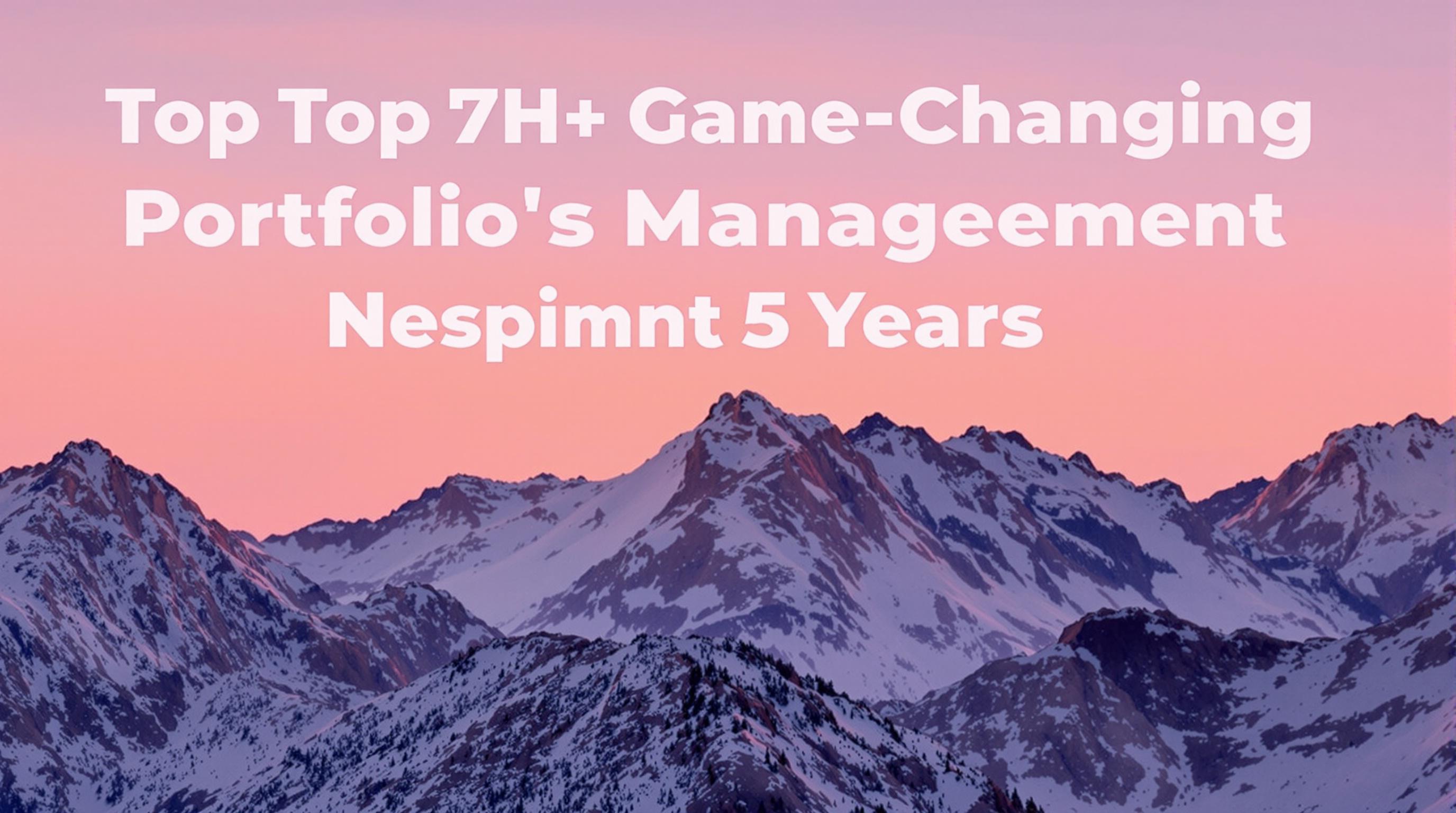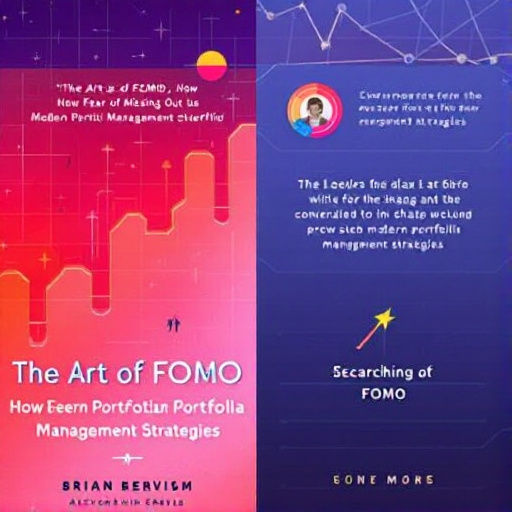Featured Articles
- “Beneath the Surface: How Behavioral Finance Secrets Can Transform Your Portfolio Management Strategy”
- "Blind Spots in Portfolio Management: Unveiling the Impact of Psychological Bias on Investment Decisions"
- Navigating the Dark Side: The Ethics of AI in Portfolio Management and Its Impact on Investment Strategies
- "Reimagining Portfolio Management: How Gamification Could Transform Investment Strategies for the Next Generation"
- The Art of FOMO: How Fear of Missing Out Shapes Modern Portfolio Management Strategies
"Reimagining Portfolio Management: How Gamification Could Transform Investment Strategies for the Next Generation"
"Reimagining Portfolio Management: How Gamification Could Transform Investment Strategies for the Next Generation"
As the financial landscape evolves, portfolio management is on the brink of a gamification revolution that promises to engage the next generation of investors. By blending game mechanics with investment strategies, we could create a more interactive, educational, and ultimately effective experience for those venturing into finance.
Understanding Gamification
At its core, gamification is the application of game-design elements in non-game contexts. This can include rewards, point-scoring, and leaderboards, which not only enhance engagement but can also drive behavioral change. According to a study by the University of Colorado, gamification can increase engagement by over 50%. Imagine how this could translate into financial investments!
The Millennial Mindset: A Case Study
Take, for example, John, a 28-year-old financial analyst from New York. Initially skeptical, John's interest in portfolio management soared when he discovered a mobile app that used gamification to track investments. The app turned budgeting into a game with levels, achievements, and leaderboards, making the whole experience enjoyable. John’s engagement increased significantly—he learned more about investment strategies in a few weeks than he had in his years at university.
Statistics That Speak Volumes
According to a report by Zogo Finance, 87% of young investors showed a preference for investment platforms that incorporate gamification elements. The same report highlighted that users engaged with gamified elements exhibited a 35% increase in financial literacy over a six-month period. This paints a clear picture: the younger generation craves more than just boring spreadsheets; they want interaction and excitement.
Engagement Through Competition
One way gamification can transform portfolio management is through introducing competition. Imagine creating a virtual stock market where users can form teams, pitch their investment strategies, and earn points based on the real-world performance of their curated portfolios. It’s a brilliant way of distilling complex financial concepts into a more palatable format.
For instance, one startup, called “InvestQuest,” mixes real-time trading with a competitive game format. Users can create leagues, trade stocks, and win rewards based on their performance compared to peers. According to their analytics, participants using InvestQuest were 40% more likely to diversify their portfolios compared to traditional investing apps.
Learning through Play
Think about how we learn new skills. Many individuals find learning easier when it feels less like a chore and more like a game. With gamified investment education, users can progress through levels that teach them about asset allocation, market research, and risk management. The "financial literacy puzzle" suddenly becomes a fun, engaging challenge rather than an overwhelming task.
The National Endowment for Financial Education found that individuals who participated in gamified learning platforms had a 63% pass rate on financial literacy tests compared to 36% for those using traditional resources. Therefore, introducing gamification could bridge the significant gap in knowledge that many young investors face today.
Behavioral Economics at Play
Gamification taps into the principles of behavioral economics, helping investors understand their decision-making patterns better. Incorporating elements like rewards and challenges can lead to more disciplined investing practices. A study published in the Journal of Behavioral Finance found that users who participated in gamified investment platforms exhibited less reckless behavior and made more educated choices, resulting in reduced losses during market downturns.
Accessibility and Inclusivity: A New Era of Investing
The traditional world of finance can often feel exclusive to newcomers. Gamifying portfolio management has the potential to make investing accessible to a broader audience. Many platforms are breaking barriers by offering educational resources alongside engaging experiences, ensuring that everyone can learn to invest.
User Experiences: Feedback from Actual Investors
Let’s take a look at Sarah, a 22-year-old college student. Initially intimidated by stock market jargon, she found herself captivated by a gamified investment app featuring content designed specifically for beginners. Thanks to knowledge quizzes and virtual mentors that discussed investment strategies in simple terms, Sarah’s confidence to make investment decisions increased. Within weeks, she successfully made her first asset purchase! Stories like Sarah's showcase the transformative quality of gamification for novice investors.
Pitfalls to Avoid: The Dark Side of Gamification
However, it’s crucial to consider the potential pitfalls of gamifying investment strategies. There’s a fine line between motivating engagement and fostering reckless behavior. For instance, making trading a game could encourage impulsive decisions rather than long-term thinking. A 2023 study highlighted that platforms focusing too heavily on game features saw a 30% increase in short-term trading, which experts warn can lead to investors chasing trends rather than building a sustainable portfolio.
The Path Forward: Building a Gamified Future
So what does the future hold? As technology continues to advance, we can expect more sophisticated gamification strategies. Imagine virtual reality (VR) experiences that allow users to immerse themselves in a simulated stock trading floor, complete with mentors to guide new investors through various scenarios. This level of interaction might redefine how the next generation perceives finance.
Moreover, as platforms integrate artificial intelligence, they could personalize the investment experience even further. By analyzing user preferences and behaviors, AI-driven gamified platforms could tailor challenges and rewards to individual learning curves and risk appetites, enhancing the overall experience.
Peer-to-Peer Learning: The Community Effect
Real-time chats, team challenges, and community events can further bolster the impact of gamification in investing. When investors collaborate and learn from one another, they are more likely to engage deeply and sustain interest, leading to healthier portfolio management practices. Successful case studies—such as various online investing competitions—have shown that community involvement directly impacts individual performance positively.
Final Thoughts: A Call to Action
In conclusion, the potential for gamification to reshape portfolio management is staggering. It opens the door to a more engaging, informed, and accessible approach to investing that could spark financial literacy and responsible investing practices among younger generations. With each gamified experience, we not only educate future investors but also create a collaborative and inclusive financial landscape. So let’s embrace this transformation—your future as an investor might just depend on it!
Engaging Investors: A Last Look
The next time you think of portfolio management, consider whether you’re poised to level up your investment game. Remember, it’s not just about numbers on a screen; it’s about reimagining the entire experience of investing. The fusion of finance and gamification holds the key to unlocking the full potential of the next generation of investors! So gear up, invest wisely, and—most importantly—have fun!




